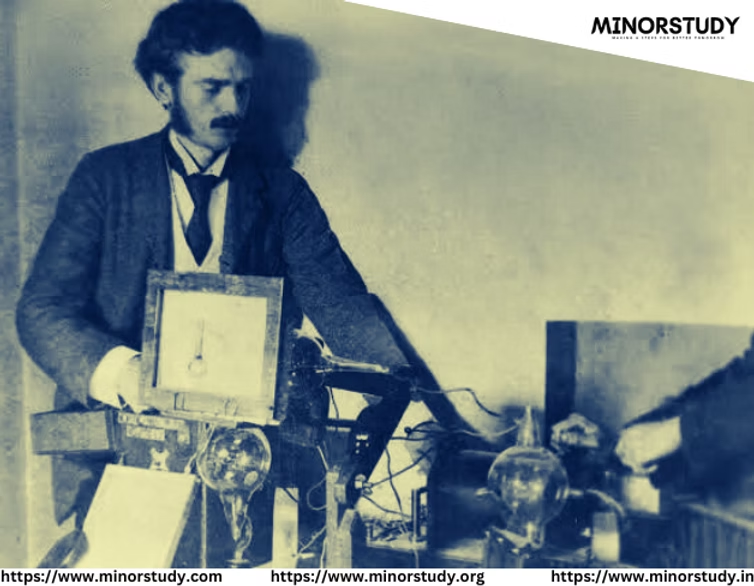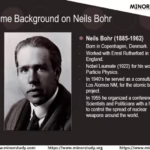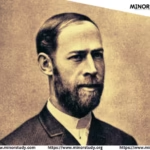Wilhelm Conrad Röntgen: The Father of X-Rays
Full Name: Wilhelm Conrad RöntgenBorn: March 27, 1845, Lennep, Kingdom of Prussia (now part of Germany)Died: February 10, 1923, Munich, GermanyNationality: GermanField: PhysicsKnown For: Discovering X-raysAwards: Nobel Prize in Physics (1901)
About Wilhelm Conrad Röntgen
Wilhelm Conrad Röntgen was a German physicist best known for discovering X-rays, a groundbreaking achievement that revolutionized medical diagnostics. His discovery, which came in 1895, earned him the first-ever Nobel Prize in Physics in 1901. Röntgen’s work has had a profound and lasting impact on science, medicine, and various technological fields.
Major Contributions
Discovery of X-rays:In 1895, while experimenting with cathode rays in a dark room, Röntgen discovered a new form of radiation that could pass through various materials, leaving a shadow of the internal structures on photographic plates. He called this new radiation X-rays, where “X” represented an unknown quantity. This discovery revolutionized medical imaging, allowing doctors to look inside the human body without surgery.
First X-ray Image:Shortly after his discovery, Röntgen took the first X-ray image, showing the bones of his wife’s hand. The image clearly demonstrated the ability of X-rays to penetrate soft tissue and reveal internal structures like bones, which opened the doors to the development of medical radiography.
Röntgenium (Element 111):In honor of his discovery, the element röntgenium (element 111) was named after him. It is a synthetic element, and although it is not naturally occurring, its naming reflects his tremendous contribution to science.
Röntgen’s Laws:He formulated important laws regarding the properties of X-rays, including their ability to penetrate materials to different extents depending on the density of the material. These laws helped scientists and physicians understand the applications and limitations of X-ray technology.
Historical Significance
Röntgen’s discovery of X-rays marked a major milestone in the history of medicine and physics. His work opened the door to the development of diagnostic imaging techniques, such as CT scans, MRIs, and other advanced medical technologies. The ability to see inside the body without surgery dramatically improved medical diagnostics and patient care, particularly in areas like broken bones, tumors, and foreign objects.
Timeline
1845: Born in Lennep, Prussia.
1865: Earned his doctorate in physics from the University of Zurich.
1874: Became a professor at the University of Würzburg, where he would later make his groundbreaking discovery.
1895: Discovered X-rays while experimenting with cathode rays in his laboratory.
1896: Published his findings on X-rays.
1901: Awarded the first Nobel Prize in Physics for his discovery of X-rays.
1923: Passed away in Munich, Germany, at the age of 77.
Interesting Facts
No Patent:Despite the enormous impact of his discovery, Röntgen did not patent X-rays. He believed that scientific knowledge should be shared freely for the benefit of humanity.
X-ray Technology:The development of X-ray technology after Röntgen’s discovery led to innovations in medical imaging, such as mammography, fluoroscopy, and even dental X-rays.
Immediate Global Impact:Röntgen’s discovery was rapidly embraced by the scientific and medical communities. Within a year of his discovery, X-ray machines were used in hospitals worldwide to treat patients.
Personal Life:Röntgen’s wife, Bertha, was the subject of his first X-ray photograph, which famously displayed the bones of her hand. She was instrumental in supporting his work.
Why Is Wilhelm Röntgen Important?
Röntgen’s discovery of X-rays changed the way medicine was practiced. Before X-rays, doctors had to rely on invasive procedures, such as surgery, to diagnose internal problems. Röntgen’s non-invasive imaging technique became one of the cornerstones of modern diagnostics and led to a revolution in medical science.
Legacy and Impact
Medical Advancements:The invention of X-rays has been essential in the fields of radiology and medical imaging. It allows for the non-invasive examination of internal organs, leading to earlier diagnosis and treatment of diseases.
Technological Development:Röntgen’s discovery paved the way for innovations in various other technologies, such as cancer treatments, radiation therapy, and security systems (X-ray machines used in airports, for example).
Ongoing Influence:The principles Röntgen uncovered about X-ray radiation continue to be foundational in fields like material science, physics, and engineering. X-ray technology is still in use today for a wide range of applications beyond healthcare.
Famous Quotes
“I did not think I was making any great discovery. I was just experimenting, and it happened.”
“I have found a new radiation.”
Blessings to Society
Röntgen’s discovery of X-rays has made a lasting impact on healthcare and science. His work enabled doctors to see inside the human body without surgery, which greatly improved the accuracy of diagnoses and led to better patient care. In addition, the use of X-rays in treatments, such as radiation therapy for cancer patients, has saved countless lives. His legacy is one of scientific innovation for the betterment of humanity.
Significance and Observance
Röntgen’s work is widely celebrated, particularly in the medical and scientific communities. His discovery has been commemorated through the naming of the röntgenium element, as well as in the Röntgen Institute in various countries. His contributions to science continue to have profound effects on modern medicine, technology, and scientific research.








